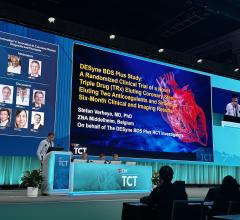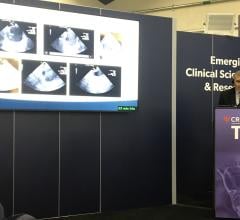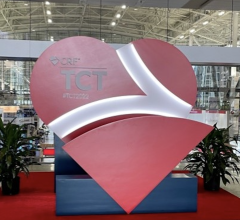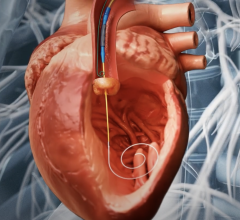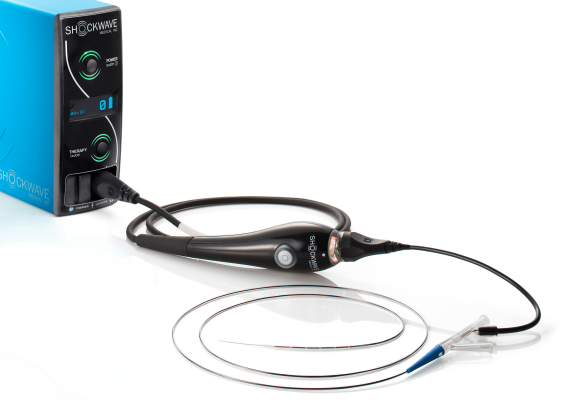
October 25, 2023 — Shockwave Medical, Inc., a pioneer in the development and commercialization of transformational technologies for the treatment of cardiovascular disease, announced that two new publications reported excellent and consistent outcomes with coronary intravascular lithotripsy (IVL) in both nodular and eccentric calcium. The publications each reported separate patient-level pooled optical coherence tomography (OCT) sub-analyses of the company-sponsored Disrupt CAD clinical studies.
“While the majority of the robust, core-lab adjudicated evidence supporting coronary IVL to date has studied concentric calcium, we are beginning to see a shift in evidence reinforcing IVL use across all calcium morphologies, both in retrospective analyses and ‘real-world’ prospective registries,” said Keith D. Dawkins, MD, Chief Medical Officer of Shockwave Medical. “This new evidence showing the consistency of IVL confirms that this platform technology has a critical role to play in not just concentric calcium, but in modifying challenging coronary calcium across all morphologies – whether concentric, eccentric, nodular or mixed.”
IVL in Eccentric Calcium
Published in Circulation: Cardiovascular Intervention and titled, “Impact of Calcium Eccentricity on the Safety and Effectiveness of Coronary Intravascular Lithotripsy: Pooled Analysis from the Disrupt CAD studies,” the eccentric analysis divided individual patient-level data (N=230) analyzed by an independent OCT core laboratory into quartiles from eccentric to concentric based on maximum continuous calcium arc.
While there were no differences in pre-procedure minimum lumen area (MLA), diameter stenosis, or maximum calcium thickness across the different calcium arcs, the calcium length and overall volume index increased progressively with concentric calcium, and a higher minimum calcium thickness was increased with eccentric calcium. Post-procedure, the number of calcium fractures, fracture depth and width increased with increasing concentricity; however, there were no significant differences in mean stent area (7.39mm2 vs 7.22mm2 vs 7.26mm2 vs 8.09mm2; p= 0.07) or stent expansion (98.7% vs 100.3% vs 95.4% vs 101.9%; p=0.74) across quartiles at the site of maximum calcification. These excellent results were achieved in the absence of any procedural complications.
“IVL was initially adopted in clinical practice because of its ability to modify concentric calcium in a safe and predictable manner, and we are now seeing the utility increase as the consistency of the safety and efficacy outcomes related to IVL expand across calcium arcs,” said Dr. Ziad Ali, MD, DPhil, Director of the DeMatteis Cardiovascular Institute at St Francis Hospital & Heart Center in Roslyn, NY, USA, and first author on the publication.* “This shift in clinical practice has been key to addressing the limitations of atherectomy technologies in modifying eccentric calcium due to wire bias and the concerns with perforations associated with high pressure balloons in eccentric lesions at the interface between the calcium and the healthy tissue. With IVL, we now have a tool that can modify the eccentric calcium and increase the vascular compliance to greatest effect while minimizing procedural risk.”
IVL in Nodular Calcium
Published in JACC: Cardiovascular Interventions and titled, “Safety and Effectiveness of Coronary Intravascular Lithotripsy for Treatment of Calcified Nodules,” the patient-level pooled analysis from the Disrupt CAD studies was the first investigation of IVL in calcified nodules, examining 54 nodules found within 248 lesions (22%) analyzable by OCT. In lesions with calcific nodules, IVL was found to be highly effective in modifying the calcium prior stent implantation, reducing stenosis to a residual area of less than 15 percent with an acute gain of 1.8 mm2 in a safe manner with no major procedural complications.
When comparing lesions with and without calcific nodules treated with IVL, there were no significant differences in minimum stent area (6.3mm2 vs 6.0 mm2), mean stent area (8.3mm2 vs 7.9 mm2), or stent expansion at the maximum site of calcification (104.9% vs 99.4%). There was a trend toward more calcium fractures (78.7% vs 65.2%; p=0.07) in lesions with calcific nodules as well as an increased fracture length (5.2mm vs 3.6mm p=0.02) in nodular lesions.
“These new acute data with IVL are very encouraging and reconfirm the safety of IVL with no procedural complications in lesions with calcific nodules, which is generally a high-risk setting, however, there is still a lot to learn about this challenging calcium morphology to reduce long-term events associated with calcific nodular protrusion into the stent,” said Dr. Ali, the first author on the publication. “Given the relatively low prevalence of nodules, it has been challenging to perform large prospective controlled studies. The collection of more ‘real-world data’ in nodules across calcium arcs with intravascular imaging can help determine the optimal treatment algorithm – whether standalone IVL or IVL with concomitant technologies – for lesions with calcified nodules, so that we can improve both short- and long-term PCI outcomes.”
For more information: www.shockwavemedical.com


 November 09, 2023
November 09, 2023 



